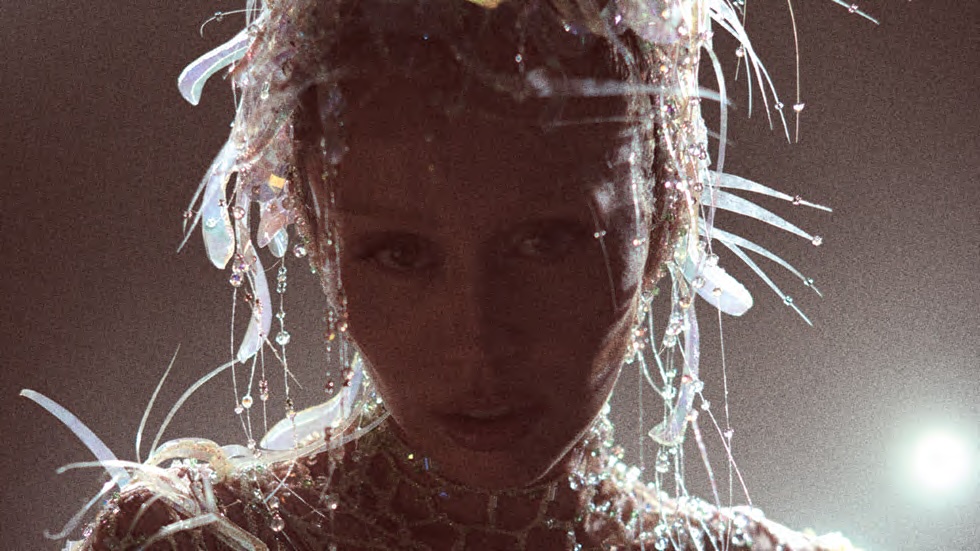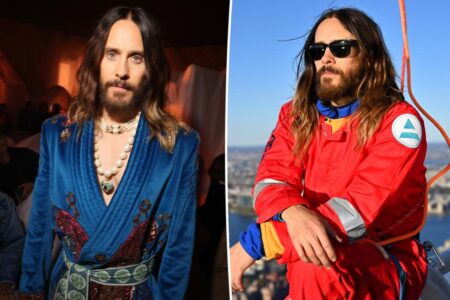It’s the rare pop star who doesn’t use his or her sexuality in some way. But the current moment, typified by stars like Chappell Roan, Sabrina Carpenter, and Charli XCX, tends to be about showcasing one’s sexuality ironically, or with an acid flippancy, or from behind a mask, or with a certain cool stance of meta control.
Miley Cyrus never got that memo. In “Something Beautiful,” a 55-minute visual album comprised of music videos, co-directed by Cyrus (with Jacob Bixenman and Brendan Walter), of the 13 tracks from her just-released album, Cyrus struts and pouts and lets it all out, she throws her body around like a gymnastic weapon, and in a way she throws her beauty around, as though she were trying to sear the power of her erotic presence into our souls.
At the Tribeca Festival, where the “Something Beautiful” visual album premiered tonight, the audience cheered every femme fatale glower, every showgirl flash of writhing flesh, every doffed piece of slinky punk designer clothing. It was clear that Cyrus staged the videos not merely as an orgy of rock-star self-love but as an homage to an era when the flaunting of sexuality was something that people felt less cautious about. She wants to take us back to the age of letting it rip.
Miley Cyrus is pre-ironic, and so is her music, which is hooky in a heavily produced big-beat way that’s starting to sound as from-another-era as Springsteen’s. (To me, that’s not an insult.) In the “Something Beautiful” videos, you feel her trying to elevate her erotic maximalism into a kind of mythology. In “Easy Lover,” she strips down to her underwear in a soundstage dressing room, then walks onto an empty Hollywood lot wearing light-blue ruffled chaps and a winged jacket, sauntering through that land of make-believe as if to say, “What you’re seeing is just…an image!” (Well, yes.) In “Golden Burning Sun,” one of the catchier songs on the album, she’s photographed in profile, wearing giant sunglasses as she rides a chopper against a stylized orange sky, singing, “You’re the only one, under the golden burning sun.” For all the independent spirit that defined “Flowers,” and at a moment when Sabrina Carpenter’s “Manchild” is being touted as a potential iconic summer hit, Miley Cyrus’s ardent anthems can sound as old-school devotional as something from the 1980s.
And, in fact, there’s an ’80s nostalgia hanging over the entire visual album. It’s very “Flashdance” meets Lita Ford. There is much windblown hair, and the video for “Walk of Fame” opens on a rhythm track highly reminiscent of Bronski Beat’s “Smalltown Boy,” as we see Miley, in a little silver dress, strutting in the middle of the night along the abandoned but highly lit-up-by-street-lights-and-store-windows Hollywood Boulevard. You keep expecting Mia Goth to show up with a knife, but Cyrus is the only one there, and does she ever work it, bending and writhing over those stars on the Walk of Fame. Here, as in several of the other videos, I kept feeling as if one of those cliché fashion photographers must be hovering off-camera, saying, “Yes, that’s it! Show me what you got!”
And then we arrive at “Every Girl You’ve Ever Loved,” which feels like the climax to the visual album. It’s set in an empty warehouse loft, with light shooting through propeller fans (very Adrian Lyne), and with Miley, in her primal assertion of feminine power, joined by Naomi Campbell, the two of them obliterating the need for anyone else. (The only dude in these videos is someone who shows up in the last one, looking like a Calvin Klein model as shot by Kenneth Anger.)
At the premiere, a journalist sitting next to me said, “There’s no narrative here at all.” Given that “Something Beautiful” was presented as a Tribeca Festival event, I think what she was hoping to see was a visual album that tried for something along the lines of Beyoncé’s “Lemonade.” “Something Beautiful” is very much not that. Yet if the videos, with their confectionary nod to the eros of celebrity, lack any semblance of a storytelling through line, I wouldn’t say that means they have no narrative. They tell the story of Miley Cyrus’s relationship to sexuality and stardom.
As an adult pop star, she has always borne a striking resemblance to the Faye Dunaway of the early ’70s, but she’s like Faye Dunaway without the mystery. Yet in “Something Beautiful,” with the songs employed as catwalk tracks, you see how Miley Cyrus, in mythologizing her erotic aura, is trying to be a performer of mystery — to let her beauty singe our eyeballs, to let it vibrate into the cosmos. Yet it’s all a little insular. The final song, the video of which plays over the end credits, is called “Give Me Love,” and it feels like the whole film could have been called that. We’re the audience for Miley Cyrus’s sex-power rapture. But we’re also the mirror she’s looking into.
Read the full article here








